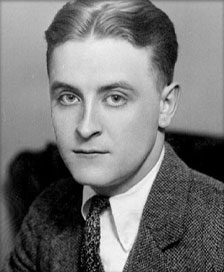Filming
Director Elliott Nugent suffered from mental illness during the shoot. According to Maibaum, Nugent had once gone up onto the roof of the Hollywood Roosevelt Hotel and almost jumped off.
Throughout the shoot, Nugent proved to be indecisive which Maibaum attributed to his mental health difficulties. In a June 1978 interview, Nugent spoke of his dissatisfaction with directing the film: “I felt very unhappy when I was making Gatsby. I thought I shouldn’t be doing it and Alan Ladd shouldn’t be playing in it. Ladd wasn’t quite up to it, but he got away with it.”
Nugent primarily filmed the entire production indoors on a studio lot, including the exterior shots, to circumvent potential delays often associated with location shooting—such as changing sunlight, rain, or intrusive tourists.
Alan Ladd, who was at the pinnacle of his fame after returning from service in World War II, could not be taken on-location as he would invariably be “mobbed” in public appearances. As a result, Nugent limited filming to the controlled, yet artificial environment of a brightly lit Hollywood sound stage, compromising visual authenticity and realism.
Filming went smoothly, although Ladd refused to remove his wedding ring and also initially refused to kiss Field. Ladd said that many of his fans were children and that he did not wish to play a character who kisses a married woman.
Ladd’s Gatsby does kiss Field’s Daisy on screen in a scene in the final film. Despite these issues, Maibaum observed that Ladd seemed perfect for the role of Gatsby:
I was in Ladd’s house and he took me up to the second floor, where he had a wardrobe about as long as this room. He opened it up and there must have been hundreds of suits, sport jackets, slacks and suits. He looked at me and said, “Not bad for an Okie kid, eh?”
I got goose pimples because I remembered when Gatsby took Daisy to show her his mansion, he also showed her his wardrobe and said, “I’ve got a man in England who buys me clothes. He sends over a selection of things at the beginning of each season, spring and fall.” I said to myself, “My God, he is the Great Gatsby!”
Reception
Fitzgerald’s friends
Fitzgerald’s close friend and literary critic Edmund Wilson, who had known Fitzgerald since their days as classmates at Princeton University, disliked the film. As Wilson had played a pivotal role in creating the F. Scott Fitzgerald revival in the 1940s, Paramount Pictures arranged a private screening of the film for Wilson in the hopes of earning his public endorsement.
According to witness Stanley Kauffmann, as Wilson exited the screening room, a smiling Paramount publicity man approached Wilson and asked him how he had liked the picture. “Not very much, I’m afraid,” replied Wilson, and he kept walking to the elevator. The Paramount publicity man appeared to be betrayed by Wilson’s reply and seemed to say, “We’ve gone to the trouble of making a whole movie out of your friend’s book and you don’t even appreciate it!”
Contemporary reviews
According to Variety, the film ranked 45th among popular movies in the U.S. and Canada in 1949. Maibaum claimed the film “did well financially although reviews were mixed. Critics differed as much as John Farrow and myself about Betty Field’s Daisy.
Some thought she was perfect, others that she was subtly wrong. Alan, for the most part, received surprisingly good personal notices. My own satisfaction stemmed from what Charles Brackett of sainted memory to all screenwriters said to me: ‘You’ve personally started an F. Scott Fitzgerald revival’.”
The New York Times’ review by Bosley Crowther dismissed the film as “a limp, sentimental romance, involving a bootlegger and an old sweetheart, based on Scott Fitzgerald’s classic story, but lacking the novel’s bite.” Crowther lamented that “the period of the Nineteen Twenties is briefly and inadequately sketched with a jumble of gay Long Island parties, old clothes, old songs and old cars.
The baneful influence of prohibition and the disillusionment of post-World War I” were conspicuously absent despite the Jazz Age setting. Crowther felt that Ladd was too solemn as Gatsby and gave the impression of “a patient and saturnine fellow who is plagued by a desperate love”.
Critics expressed conflicted opinions about Betty Field’s performance as Daisy. Critic Lew Sheaffer wrote in The Brooklyn Daily Eagle that Field performed “the difficult feat of making a strong impact” as Gatsby’s “vague, shilly-shallying sweetheart.”
Boyd Martin of The Courier-Journal opined that Field was “convincing in showing the shallowness of Daisy’s character”, whereas Wanda Hale of The New York Daily News complained that Field gave “such a restrained, delicate performance that you have to use some imagination to understand her weakness.”
Critic Lew Sheaffer wrote in The Brooklyn Daily Eagle that Macdonald Carey acquitted himself well as Nick Carraway, Gatsby’s only friend.
Likewise, Boyd Martin of The Courier-Journal opined that Carey gave a quiet and reserved performance.
Retrospective reviews
According to film scholar Wheeler Winston Dixon, the 1949 version of The Great Gatsby is “a curiously tedious, flat, and unimaginative film, lacking both visual and thematic resonance.” Dixon posits that the film’s shortcomings primarily stem from Elliott Nugent’s uninspired direction, accentuated by an overly wordy and meandering screenplay. As a result, the film appears to lack a cohesive vision, both visually and thematically.
Restoration
In 2012, Universal Pictures released a new print of the 1949 film
